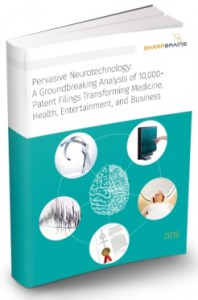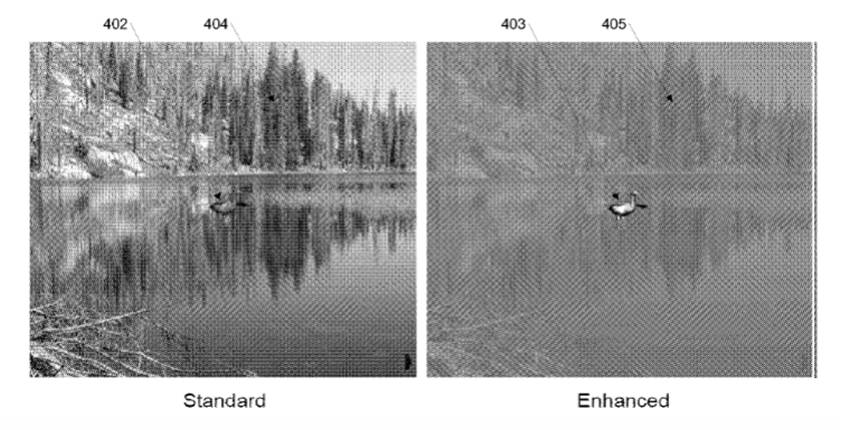Enhancing cognition via brain training with a visual emphasis: Key neurotechnology patent #38
Today we highlight a 2010 patent assigned to Posit Science Corporation, the developer of BrainHQ brain training system. (As mentioned, we are featuring foundational Pervasive Neurotech patents, from older to newer by issue date, to get a better glimpse into emerging trends)
U.S. Patent No. 7,773,097: Visual emphasis for cognitive training exercises
- Assignee(s): Posit Science Corporation
- Inventor(s): Michael M. Merzenich, Peter B. Delahunt, Joseph L. Hardy, Henry W. Mahncke, Donald Richard
- Technology Category: Neurocognitive training
- Issue Date: August 10, 2010
SharpBrains’ Take:
In a similar yet unique approach to the ‘961 patent (another noteworthy non-invasive neurotechnology patent assigned to Posit Science), the ‘097 patent discloses methods for iteratively testing and training a user’s ability to discern between presented stimuli. Complimenting the ‘961 patent’s method of pattern recognition, the ‘097 patent teaches a series of approaches for identifying and discerning foreground objects from background settings, for example by identifying a camouflaged duck in the foreground from a lake in the backdrop (see illustrative image above). The specification describes varying the salience of the background or foreground through a variety of means including contrast related to chromatic features, luminance, spatial frequency, size, texture, etc., iteratively presenting an object that is more or less difficult to be identified depending on the user’s skill level. The synergistic coverage of the ‘961 patent with other Posit Science intellectual property, useful field of endeavor of cognitive training with visual stimuli, and dependent claims (33 in total) covering a variety of types of visual emphasis techniques recited as a limitation in a sound independent claim, are among the factors that make the ‘097 patent a key non-invasive neurotechnology patent.
Abstract:
Computer-implemented method for enhancing cognition of a participant using visual emphasis. One or more scenes are provided and are available for visual presentation to the participant, each scene having a background and at least one foreground object. A scene is visually presented to the participant with a specified visual emphasis that enhances visual distinction of the at least one foreground object with respect to the background, where the foreground object(s) and/or the background are modified or selected to achieve the specified visual emphasis. The participant is required to respond to the scene, and a determination made as to whether the participant responded correctly. The visual emphasis may be modified based on whether or not the participant responded correctly a specified number of times. The presenting, requiring, and determining (and possibly the modifying) are repeated in an iterative manner to improve the participant’s cognition.
Illustrative Claim 1. A method for enhancing cognition in a participant, utilizing a computing device to present visual stimuli for training, and to receive responses from the participant, the method comprising:
utilizing the computing device to perform:
- providing one or more scenes, each having a background and at least one foreground object, wherein the one or more scenes are available for visual presentation to the participant;
- visually presenting a scene from the one or more scenes to the participant,
wherein said visually presenting comprises visually presenting the at least one foreground object and/or the background with a specified visual emphasis that visually distinguishes the at least one foreground object with respect to the background;
- requiring the participant to respond to the scene;
- determining whether the participant responded correctly;
- modifying the specified visual emphasis based on said determining, wherein said modifying the specified visual emphasis comprises adjusting the degree of visual emphasis according to one or more visual emphasis techniques; and
- repeating said visually presenting, said requiring, and said determining one or more times in an iterative manner to improve the participant’s cognition.
 To learn more about market data, trends and leading companies in the digital brain health space –digital platforms for brain/ cognitive assessment, monitoring and enhancement– check out this market report. To learn more about our analysis of 10,000+ patent filings, check out this IP & innovation neurotech report.
To learn more about market data, trends and leading companies in the digital brain health space –digital platforms for brain/ cognitive assessment, monitoring and enhancement– check out this market report. To learn more about our analysis of 10,000+ patent filings, check out this IP & innovation neurotech report.



